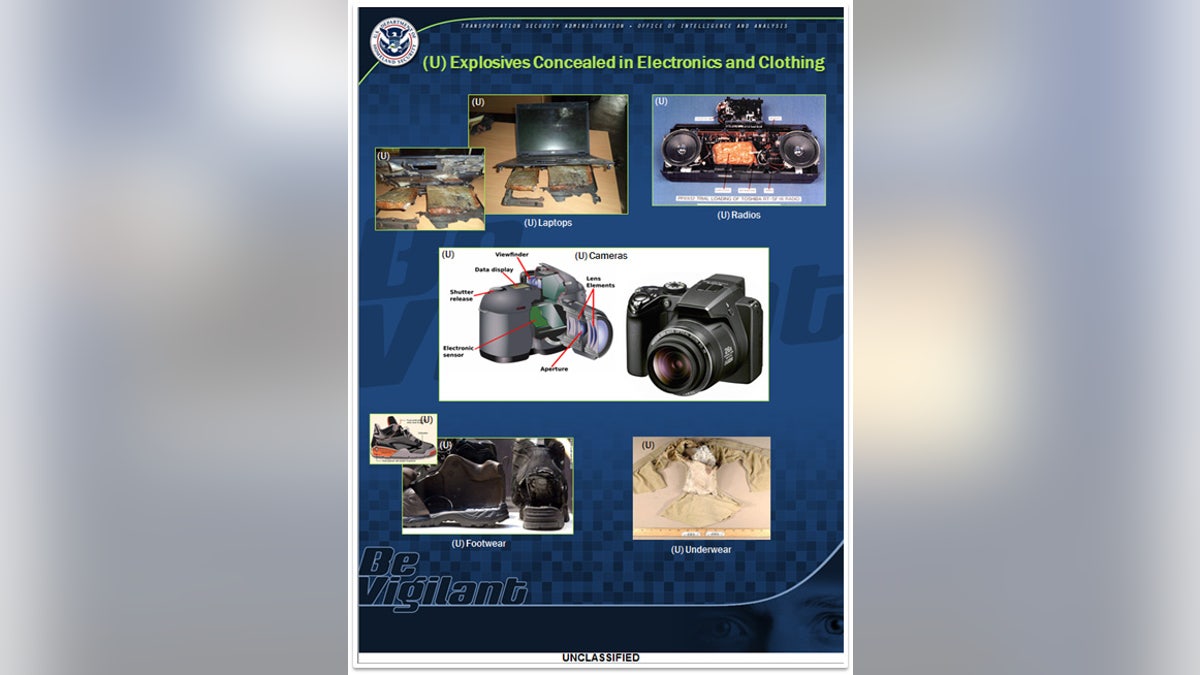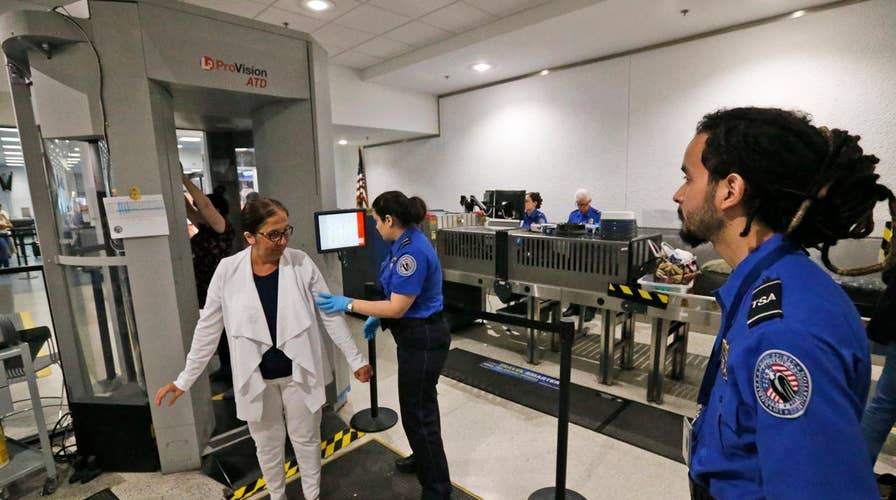TSA tests expanded electronics screening at select airports
New procedure may go nationwide; Doug McKelway reports
The Transportation Security Administration introduced new screening protocols for carry-on bags at a number of airports across the nation on Wednesday—as the Department of Homeland Security considers expanding a ban on large electronics in the cabins of U.S.-bound flights.
The TSA selected about a dozen U.S. airports to begin testing the new security program, which could potentially expand to other airports nationwide. The program will require travelers to place any electronics larger than a cell phone in a separate bin for X-ray screening. According to the TSA, officials at the security checkpoints may also advise travelers to place other carry-on items in separate bins.
“TSA’s top priority is to protect the traveling public, and every policy and security procedure in place is designed to mitigate threats to passengers and the aviation sector—which we know our adversaries continue to target,” a TSA official told Fox News.
U.S. transportation, specifically the aviation system, has been a top terrorist target since 9/11, and as part of the TSA’s counterterrorism efforts, the agency adjusts security screening procedures to “stay ahead” of “evolving threats.”
TSA was created in 2002, after the September 11th attacks. Since then, U.S. homeland security officials have faced an ever-changing threat to the aviation system.
“Before 9/11, baggage wasn’t screened, so we really had a Herculean task,” TSA Chief of Staff Chad Wolf told Fox News. Wolf began working with the TSA at the agency’s inception, and stayed through 2005. After working in the private sector for 11 years, Wolf is back on the frontlines of aviation security.
“9/11 was a game changer,” Wolf said. “We’ve watched the threat evolve from there, so our measures of security has evolved and changed to anticipate and respond.”
Here is a timeline of some of the most significant terror attempts targeting U.S. air travel since 9/11:
December 2001: Shoe Bomber
? Plot: In December of 2001, months after the September 11th attacks on the World Trade Center, British citizen Richard Reid attempted to ignite a show bomb on a flight from Paris to Miami.
? Response: TSA now requires at security checkpoints that passengers remove their shoes to go through X-ray screening.
August 2006: Liquid Bomb Plot
? Plot: Abdulla Ahmed Ali, Tanvir Hussain, and Assad Sarwar, among others, plotted to place liquid explosives on 10 commercial airlines traveling from the United Kingdom to the U.S.
? Response: TSA now has a 3-1-1 liquids rule: 3.4 ounces or less per container fit into one quart-sized clear plastic bag, and one bag per passenger.
James Norton, who was Deputy Assistant Secretary at the DHS during the time of the liquid plot, told Fox News the department took an “all hazards approach” after the plot. The terror attempt also inspired the Passenger Name Record (PNR) Agreement between the U.S. and the European Union, which made it possible to transfer passenger data so officials could identify passengers in the cabin before takeoff.
“The 2006 plot was kept under wraps—it was essentially, a secret operation,” Norton told Fox News. “Even though we had the majority of the bad actors, DHS still went ahead and implemented the liquid ban to ensure safety—for security folks, they always act on the side of caution.”
December 2009: Underwear Bomb Plot
? Plot: On Christmas Day, Umar Farouk Abdulmutallab, a Nigerian engineering student, flew from Amsterdam to Detroit and attempted to detonate a bomb hidden in his underwear as the plane began to land.
? Response: TSA officials said they deployed Advanced Imaging Technology, including millimeter wave and general-use backscatter x-ray systems.
Others plots against U.S. aviation include:
? A fuel bomb plot in June of 2007, when Russel Defeitas, Abdul Kadir, Kareem Ibrahim, and Abdel Nur plotted to blow up a jet fuel infrastructure near John F. Kennedy International Airport in New York City.
? An October 2010 plot inspired by Al Qaeda’s Anwar al-Awlaki—two packages of explosives were found on separate cargo planes heading from Yemen to the U.S.
? A 2012 “underwear bomber” copycat—when authorities in the Middle East seized an underwear bomb, catching a suspect who intended to attack a Western-bound aircraft.

Insider Threats
U.S. officials and lawmakers have become increasingly concerned with the prospect of “insider threats”—meaning airport employees could pose a risk based on their ability to bypass traditional screening requirements that travelers undergo.
The House Subcommittee on Transportation and Protective Security, led by Rep. John Katko, R-N.Y., released a report in February outlining attempts by airport employees to detonate a bomb at an airport, as well as smuggling guns and drugs. Some employees even became involved in terrorist activities overseas.
“The baggage handler, the mechanic- all of these workers behind the scenes, could post a threat,” the committee aide told Fox News. “We could have a problem on our hands.”
But Wolf told Fox News the insider threat is always something the TSA is “concerned about.”
“When you talk about an insider threat, we have a good visibility on aviation workers here domestically, so we do a number of things to vet those individuals, but internationally it’s different,” Wolf said.
U.S. Travelers adapting to TSA security measures
According to Norton, informing the public is a crucial part in thwarting plots and disrupting threats.
“This is part of the disruption process, and a way to let potential bad actors know that we are aware of this threat,” Norton told Fox News.
In March, DHS implemented an electronics ban on flights to the U.S. from 13 international airports due to reports of increased terror threats that suggested Al Qaeda and other groups were still looking to smuggle explosive material onboard planes. DHS is currently considering expanding the ban to more international airports with U.S.-bound flights.
Wolf told Fox News that the TSA believes the traveling public “certainly understands” the threat, but also faces an inconvenience.
“Our number one priority is to make travelers safe, and we are going to make sure we put in place all measures possible to do this,” Wolf told Fox News. “The public adapts, whether its taking off their shoes or restricting their liquids, they understand and the vast majority of them want TSA to take these measures.”
Fox News' Jake Gibson contributed to this report.






















